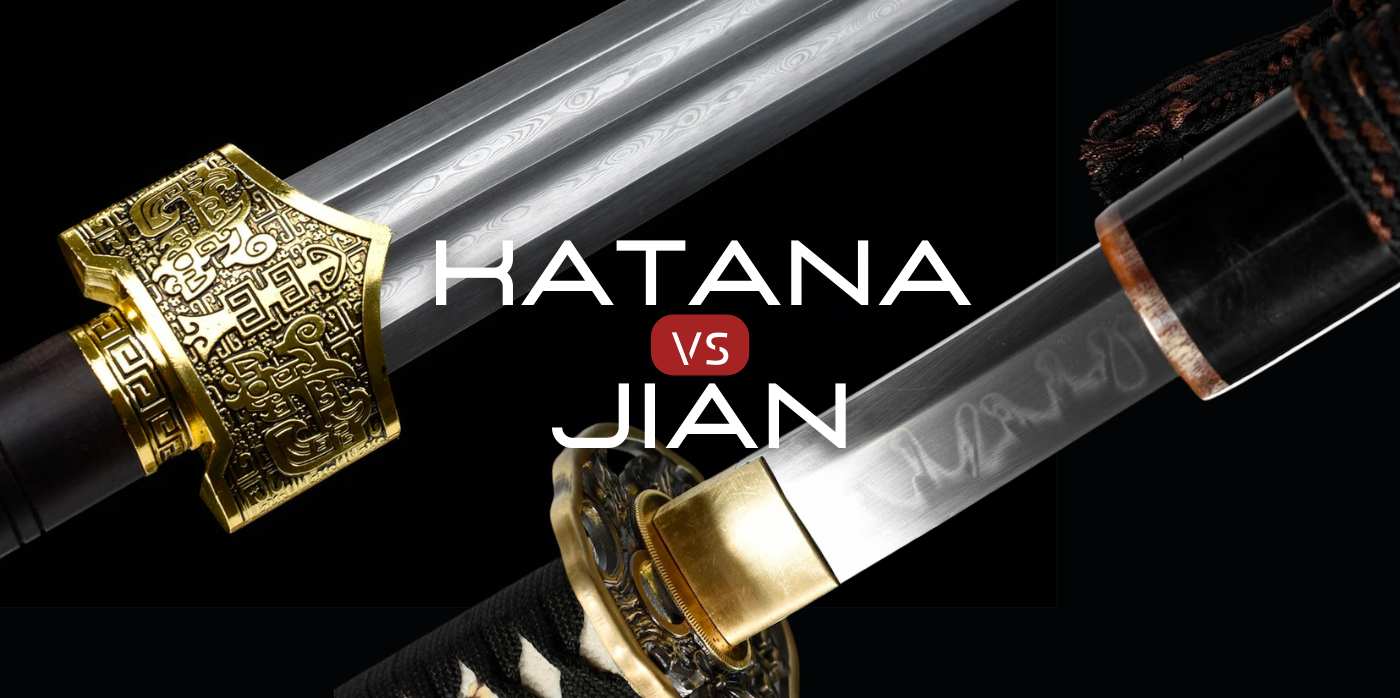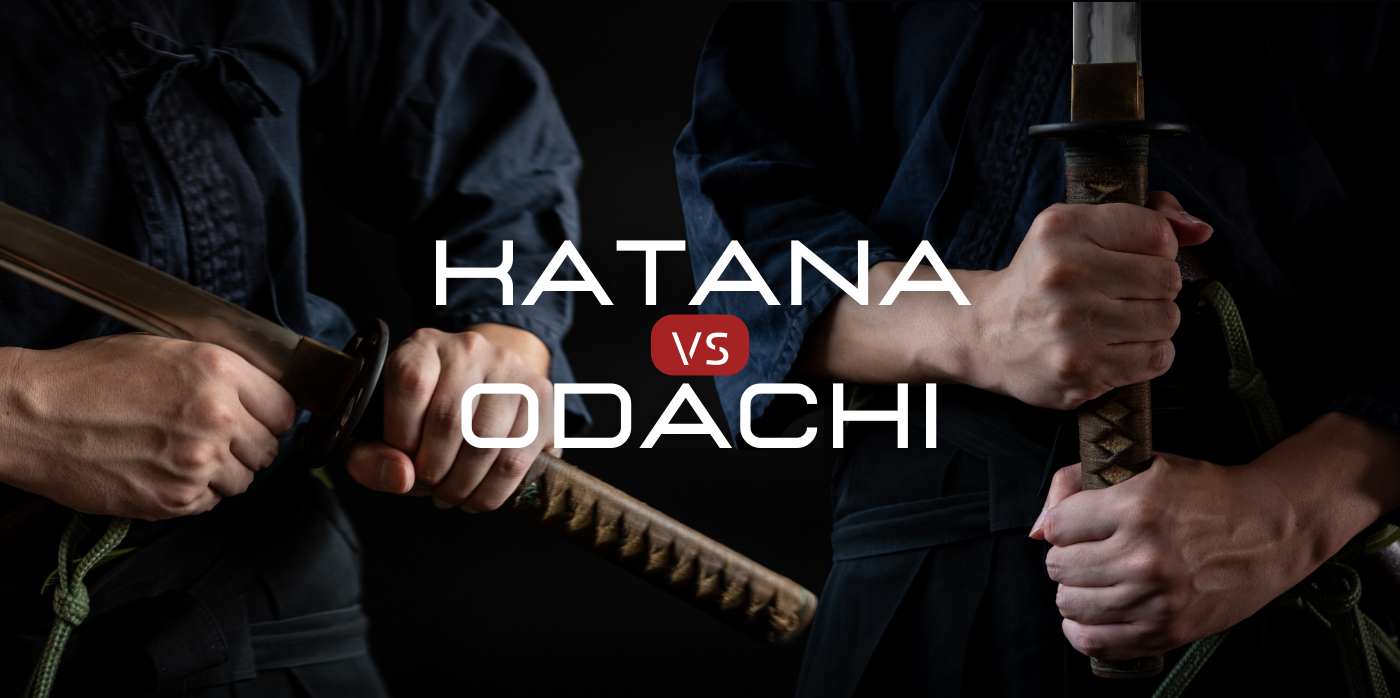Both originating from ancient times, the Jian sword and the Katana have held their places in the realm of martial arts, military history, and culture. This article aims to explore these two fascinating weapons, delving into their similarities and differences, and how each contributes uniquely to the world of swordsmanship.
Understanding the Katana and the Jian Sword
The Katana, symbolic of the Samurai culture, is a Japanese sword characterized by its curved, slender, single-edged blade, circular or squared guard, and long grip accommodating two hands. Revered for its sharpness, the Katana's craftsmanship is a testament to the skill and dedication of Japanese blacksmiths.
Contrastingly, the Jian sword, also known as "The Gentleman of Weapons" is a Chinese sword featuring a double-edged straight blade. A true embodiment of Chinese martial arts and philosophy, the Jian's balance, flexibility, and lightness have made it a popular choice for centuries.
To sum-up:
- The Katana and Jian are iconic swords from Japan and China respectively.
- While the Katana features a single-edged, curved blade, the Jian boasts a straight, double-edged blade.

Katana Craftsmanship vs Jian Sword
The Katana's unique creation process, including differential hardening and meticulous polishing, reflects the perfectionistic spirit of the Japanese. The end result is a sword with supreme sharpness and an aesthetically pleasing 'hamon,' or temper line.
On the other hand, Jian swords are created using pattern welding techniques. They involve folding and hammering various types of steel into layers, granting the Jian resilience and a distinctive appearance.
Katana Parts vs Jian Sword
Blade
The Katana's blade, usually 23.62"-28.74" (60-73 cm) in length, is distinctive for its curved shape and sharp cutting edge. In contrast, the Jian's straight, double-edged blade is often between 27.56"-31.50" (70-80 cm) long, perfect for both slashing and stabbing techniques.
Guard
Katana guards, or "tsuba," are typically round or square and serve to protect the hand from sliding onto the blade during thrusts. Jian guards, while smaller, effectively prevent the hand from moving onto the blade.
Handle
Katanas have long handles wrapped in "samegawa" (ray skin) and "ito" (braid), allowing for a two-handed grip. The Jian's handle, although shorter, offers a comfortable one-handed grip.
Pommel
The Katana's pommel, or "kashira," is designed to balance the blade and secure the sword's construction. Similarly, the Jian's pommel aids in balancing the sword and can also be used offensively in close quarters combat.

Katana Characteristics vs Jian Sword
Blade Design
The Katana's curved blade, optimized for swift cuts and strikes, is a testament to the bushido (samurai code) and Japanese battlefield tactics. In comparison, the Jian's straight and double-edged blade is designed for precision and flexibility, facilitating various offensive and defensive techniques.

Weight of the Blade
Katanas are generally heavier, with the average weight around 2-3 lbs, as they were made for slashing through enemies with power. Conversely, the Jian, a lighter sword weighing approximately 1.1-2.2 lbs, is more agile, suited for precise, rapid strikes and parries.
Sharpness
While both swords boast impressive sharpness, the Katana is revered for its razor-like edge, achieved through differentially hardening the steel. Jian swords, however, are sharp on both sides, allowing for varied combat techniques.
Grip
Katanas offer a two-handed grip, accommodating powerful slashes and cuts. The Jian, designed for a one-handed grip, provides more flexibility in movement and technique, such as pairing with a shield or implementing acrobatic maneuvers.
Balance
The balance of a Katana typically leans towards the hilt, aiding control and power, while the Jian, well-balanced throughout its length, encourages swift and diverse movements.
Durability
Katanas are famous for their durability, a result of repeated folding and forging of the steel. Meanwhile, the Jian's resilience comes from its pattern-welded construction, allowing it to endure fierce combat situations.
Reach
With their long blades, both swords offer good reach. However, the Katana's curvature can sometimes limit thrusting reach, whereas the straight Jian, used in conjunction with footwork and body movement, can have an advantage in terms of thrusting distance.
The Katana and Jian differ significantly in blade design, weight, sharpness, grip, balance, durability, and reach.
Katanas are built for power and durability, whereas Jian swords favor agility and flexibility.
Katana Combat Style vs Jian Sword
Samurai used Katanas in Kenjutsu and Kendo, with techniques primarily involving powerful cuts and slashes. The Jian, however, is often seen in Chinese martial arts like Tai Chi, emphasizing fluidity, control, and a balance of offense and defense.
In a duel, which would have an advantage: a Katana or a Jian Sword?
As always, the answer to this largely depends on the wielders' skills, strategies, and circumstances. A Katana might have the upper hand in terms of raw power and durability, but a Jian could turn the tides with its agility, precision, and versatile attack patterns.
Katana Maintenance vs Jian Sword
The maintenance routine for a Katana involves careful cleaning, oiling, and storing in a dry, cool environment. It also requires periodic inspections for any signs of rust or damage. A Jian sword follows a similar maintenance process, although its double-edged blade may require additional attention to keep both edges sharp and rust-free.

History and Origin of the Katana vs Jian Sword
The Katana's history dates back to Japan's Kamakura period (1185–1333), where it became the symbol of the samurai class. Born out of necessity for a swift, sharp weapon that could be quickly drawn for battle, the Katana embodies Japan's feudal era and bushido code.
On the other hand, the Jian is one of the four major weapons in Chinese history, tracing its roots back to the Bronze Age. This "gentleman of weapons" represents centuries of Chinese martial philosophy and the ideal of balance and finesse in combat.
Conclusion
The Katana and the Jian, each hailing from different parts of the East, are significant representations of their respective cultures' historical martial philosophy and combat approaches. Every weapon possesses a distinct set of attributes and traits that differentiate it from others. The decision to choose a Katana or a Jian fundamentally rests with the individual wielding it and the specific circumstances they find themselves in. Both swords, steeped in rich history and perfected over centuries, continue to captivate modern sword enthusiasts and martial artists alike.



